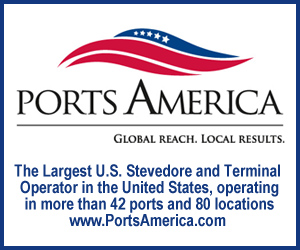
Thursday, October 9, 2014
Drewry: Alliances and lower unit costs may spur container industry recovery
The recovery of the container industry, possibly by late 2016 or 2017, will be based around the new mega alliances and the continued reduction of unit costs, rather than supply and demand at the trade route level, according to the latest Container Annual Review & Forecast by Drewry Maritime Research.
The maritime analysts think a different recovery is emerging that probably won’t be built on any improvement in freight rates.
Newbuild orders indicate that at least 53 and 45 ULCVs will be delivered in 2015 and 2016, respectively, paired with the delivery of 100 ships of between 8,000-TEU and 10,000-TEU from the yards—at the same time as a similar number of ships being cascaded from the Asia-North Europe trades—will mean both reductions in unit costs and the potential for excess capacity on some routes, the researchers predict.
Drewry forecasts that freight rates will decline in 2015 by as much as 3 to 4 percent year-over-year, so the focus is more on costs than revenue, which is beginning to yield results for carriers.
Drewry’s Container Annual Review & Forecast 2014/15 says three new trends have emerged: carrier revenue is increasing again (due to more rapid growth), costs are falling faster than rates, and some carriers are coming out of the red. Despite the fact that unit revenues are down by an estimated 4 percent year-over-year for the first six months of 2014, unit costs have been reduced by 6 percent.
New alliances formed in the next 3-6 months may help a number of container lines reduce their cost base further, but Asia-to-North Europe spot rates have dropped 54 percent since the beginning of August to around $1,300 per-FEU.
"The possibility of matching supply and demand to a degree acceptable for carriers in 2015, especially at the critical trade route level and in key North-South trades is probably out of reach," said Neil Dekker, Drewry’s director of container research. "The strategy of course is to drive down unit costs, but this will not necessarily result in considerably better utilization (since all lines upgrading), nor in freight rates."
"The question we should be asking is not about when a recovery will happen, but what form the so-called recovery will take. In essence, the industry is merely continuing to adapt as best it can. Recovery, in whatever form it takes, will not simply be in the traditional manner of matching supply and demand. This is about survival and the long-term management and sharing of costs."
More Newswire stories
TSA lines recommend November rate hike
Corps advises that Port of Charleston channel be dredged to 52 feet
CN train carrying petroleum derails, catches fire


Home | The Magazine | Conferences | Port Handbooks | Newswire | Advertise | Ocean Schedules | Contact
CBN Archives | About CBN | Subscribe to CBN | Marine Fuels Conference | Southeast Freight Conference | Heartland Shippers’ Conference | Port Productivity Conference | Pacific Northwest Ports Handbook
Golden Gates Ports Handbook | Southern California Ports Handbook | Buy Handbooks | Subscirbe to Newswire | Newswire Archives | Upload Files






